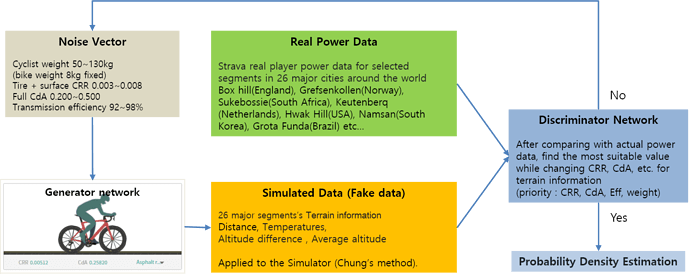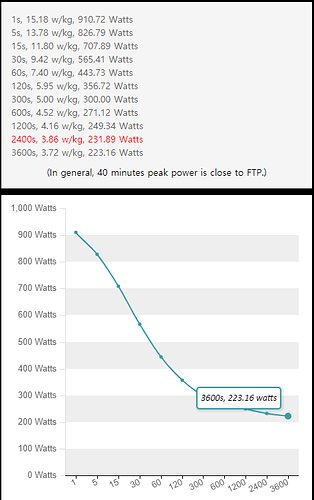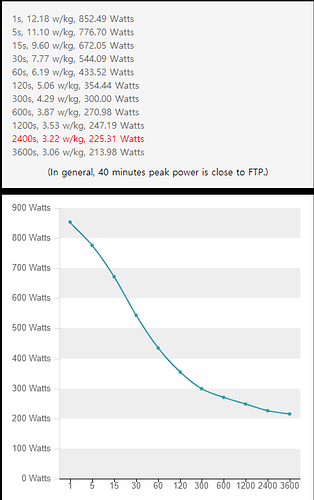Hello!
I’ve wanted to discuss this from a long time ago. I think this forum is suitable and I post it.
I think estimating FTP is the most important in recent cycling training programs.
The question I have is why they don’t differentiate between training levels when estimating FTP.
Strava and WKO probably use a critical power model and a method of linear regression analysis of kJ graphs. I think this is a legacy technology.
These days, the number of users of power meters has increased, and data is available through the Strava API.
But why not make advanced machine learning (deep learning) modeling?
So I developed it myself.
If the cyclist’s training level is different, the duration of the same power is different.
In other words, w/kg is highly correlated with the degree of aerobic training.
This is Joe Friel’s insight, and I trust it.
So, I made a modeling that introduced weight as a correlation to the existing FTP estimation method.
First, I collected data from about 26 major segments around the world and generated statistical data using the GAN algorithm.
To put it simply, it is assumed that the record of Strava is the peak power, and the data with power is used as the correct answer data.
It is a competitive learning method for virtual physics engines.
(This virtual physics engine was made based on the Chung method, and if you are curious, I can open it later.)
And on Strava, the weight is divided into 10kg units. Here you can get the variance data of the weight.
If you know deep learning like this, anyone can make stereo power curve modeling without experimenting with professional players. How easy is it?
It wasn’t easy for me. It took months to adjust the data.
result,
It is distributed data of 5 minutes power.
I have power curves and variance data for 600,000 people created by this modeling.
And the simplified modeling can be checked through this link.
https://koreancycling.network/strava/e_curve.php
(There are no ads or sign-up.)
There is simple example.
There are two players, 300 seconds, 300 watts.
By the way, the weight is different at 60kg and 70kg.
Existing models have the same 300 sec and 300 watts, so most of them will calculate the same FTP and power curve.
The modeling I made is different weights, different FTP.
Like this.
-60kg
-70kg
I have shorter experience in cycling training and cycling science than many of you here.
So, I would like to receive a lot of opinions and feedback.
I’m curious about David’s opinion of developing intervals.icu, and I’m also curious about the opinions of several coaches.
I welcome critical comments.
Thank you.



